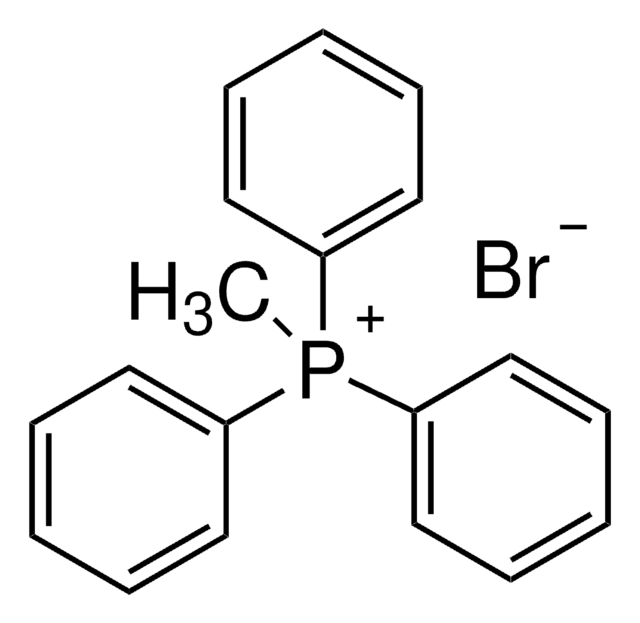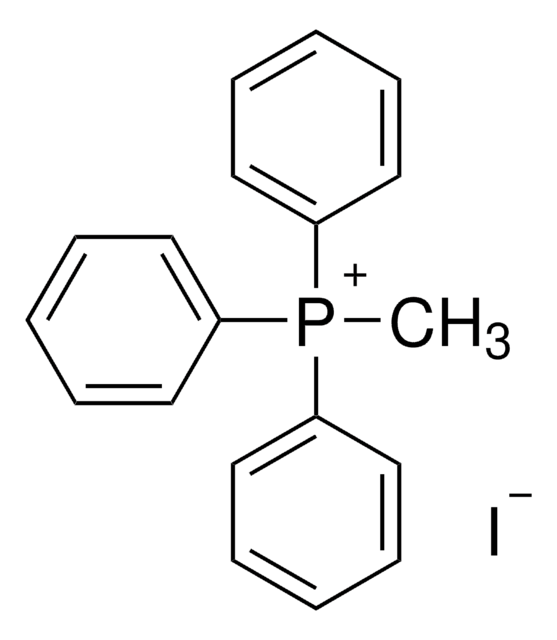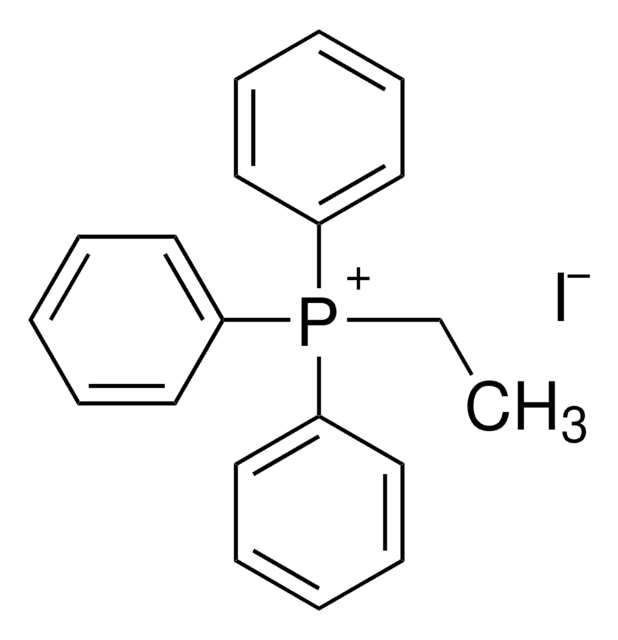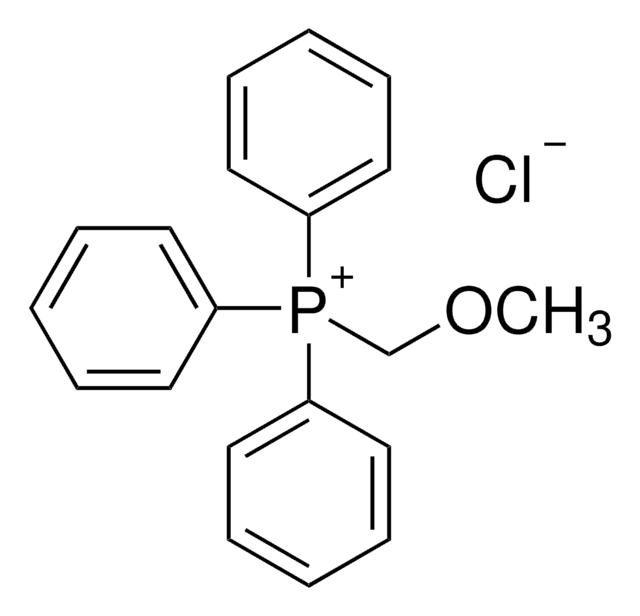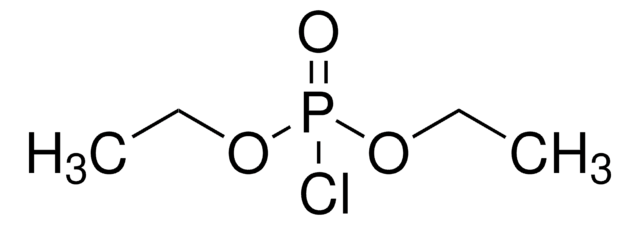Key Documents
E50604
Ethyltriphenylphosphonium bromide
99%
Synonim(y):
TEP
About This Item
Polecane produkty
Poziom jakości
Próba
99%
przydatność reakcji
reaction type: C-C Bond Formation
mp
203-205 °C (lit.)
ciąg SMILES
[Br-].CC[P+](c1ccccc1)(c2ccccc2)c3ccccc3
InChI
1S/C20H20P.BrH/c1-2-21(18-12-6-3-7-13-18,19-14-8-4-9-15-19)20-16-10-5-11-17-20;/h3-17H,2H2,1H3;1H/q+1;/p-1
Klucz InChI
JHYNXXDQQHTCHJ-UHFFFAOYSA-M
Szukasz podobnych produktów? Odwiedź Przewodnik dotyczący porównywania produktów
Powiązane kategorie
Zastosowanie
- D-amino acids from L-cysteine-derived thiazolidines
- Leiodolide A via aldol reactions and Horner-Wadsworth-Emmons olefination
- Cycloalkanoindolines via diastereoselective intramolecular inimo-ene reactions
- WXYZA′ domain of maitotoxin using the coupling of key building blocks
Reactant for:
- Solid-state metathesis polycondensation to form alkyl-dipropenylthiophene monomers
- Mizoroki-Heck cyclization and cascading Tsuji-Trost cyclization / lactonization cyclization reactions for synthesis of an ABC ring system
Hasło ostrzegawcze
Danger
Zwroty wskazujące rodzaj zagrożenia
Zwroty wskazujące środki ostrożności
Klasyfikacja zagrożeń
Acute Tox. 3 Oral - Aquatic Chronic 3 - Eye Dam. 1
Kod klasy składowania
6.1D - Non-combustible acute toxic Cat.3 / toxic hazardous materials or hazardous materials causing chronic effects
Klasa zagrożenia wodnego (WGK)
WGK 2
Temperatura zapłonu (°F)
401.0 °F
Temperatura zapłonu (°C)
205 °C
Środki ochrony indywidualnej
dust mask type N95 (US), Eyeshields, Faceshields, Gloves
Wybierz jedną z najnowszych wersji:
Masz już ten produkt?
Dokumenty związane z niedawno zakupionymi produktami zostały zamieszczone w Bibliotece dokumentów.
Nasz zespół naukowców ma doświadczenie we wszystkich obszarach badań, w tym w naukach przyrodniczych, materiałoznawstwie, syntezie chemicznej, chromatografii, analityce i wielu innych dziedzinach.
Skontaktuj się z zespołem ds. pomocy technicznej